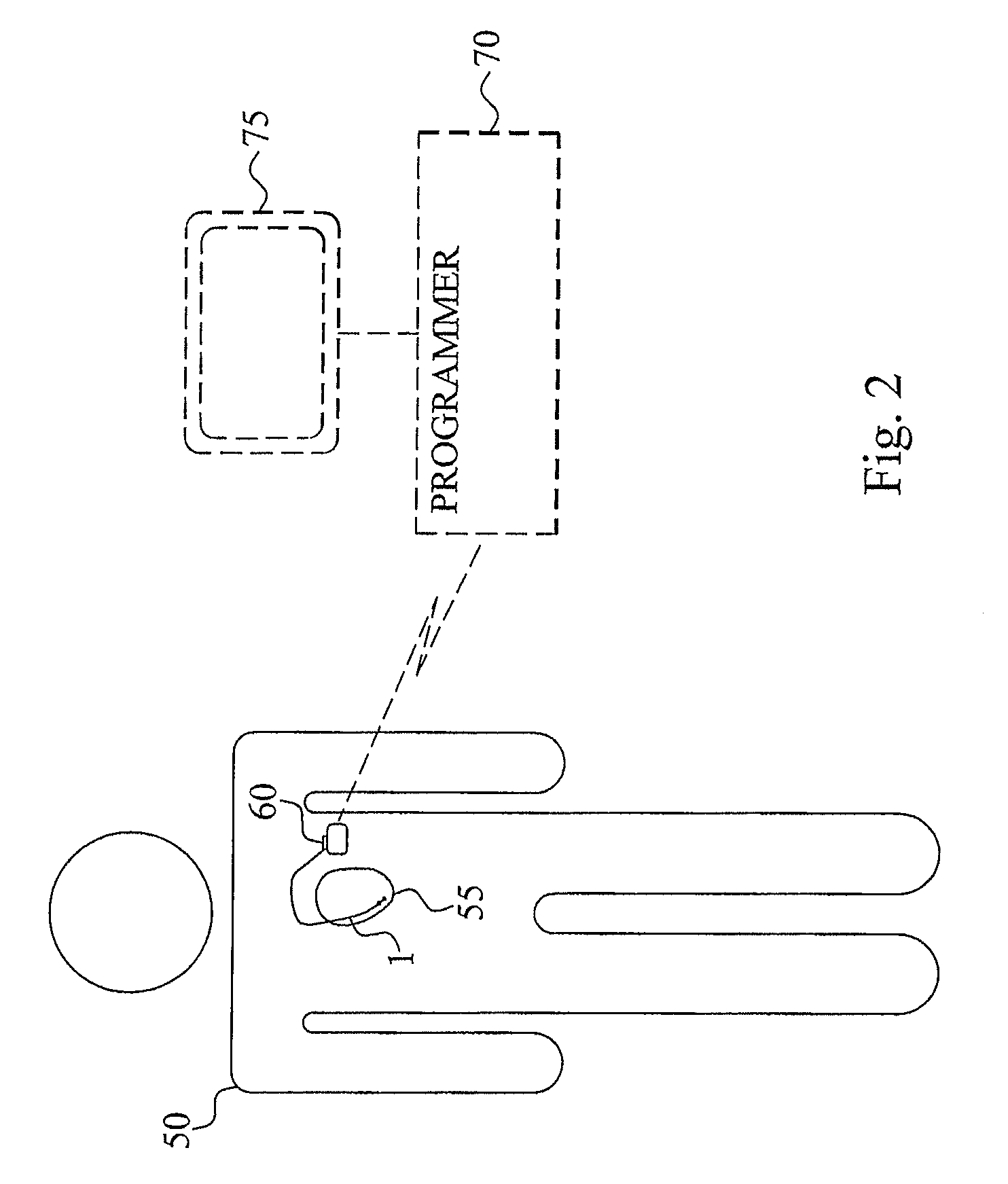Active fixation element
a technology fixing elements, applied in the field can solve the problems of unresolved and somewhat lessened problems relating to the anchoring of active fixation elements in tissue, and achieve the effect of reducing the formation of blood clots
- Summary
- Abstract
- Description
- Claims
- Application Information
AI Technical Summary
Benefits of technology
Problems solved by technology
Method used
Image
Examples
first embodiment
[0065]the helical fixation element is illustrated in FIGS. 4A to 4C. FIG. 4A illustrates a three-dimensional view of the helical fixation element 100. FIG. 4B is a cross-sectional view of the fixation element 100 and FIG. 4C is a cross-sectional view of the helical wire 160 forming the fixation element 100. As is seen in the figures, the fixation element 100 has a general circular cross-section and can therefore be manufactured from a round wire 160. However, in clear contrast to the prior art fixation elements, a blood drainage channel 110 in the form of a groove or recesses 110 in the helical wire 160 runs along the helical windings 120 from the distal helix end 140 to the proximal lead end 150.
[0066]In the figures, the groove 110 is running along the windings 120 and faces radially out from an inner diameter space 130 confined by the helix windings 120. The present invention is though, no limited to such a relative channel positioning in the wire 160. In an alternative embodiment...
second embodiment
[0070]Compared to the helix embodiment disclosed by FIGS. 4A to 4C, the second embodiment has a better penetration design that is more suited for penetrating the endocardium and the myocardium while reducing the caused tissue injury. The helical fixation element also has improved ability to withstand pull forces on the distal lead end when the helix is fully extended in the tissue. Since the crescent-shape implies the formation of edges on the windings 220, the current density increases at the edges, thereby allowing a reduction in the energy consumption in connection with tissue stimulation.
third embodiment
[0071]a helical fixation element 300 according to the present invention is illustrated in FIGS. 6A to 6C. Compared to the previous embodiments, the cross-sectional dimension of the helix wire 360 is smaller in the direction of the longitudinal axis of the fixation element 300 than in a direction transverse to the longitudinal axis. The helical wire 360 can have a general rectangular cross-section with a drainage channel running along the helix windings 320 from the tissue-penetrating end 340 and preferably up to the device-connecting end 350. The channel 310 is preferably formed in at least one of the longer sides of the rectangular, implying that the channel 310 is facing the device-connecting 350 or the tissue-penetrating 340 end of the fixation element 300.
[0072]Instead of utilizing a rectangular cross-section, the wire 360 can be elliptical with the major axis perpendicular to the longitudinal helix axis. FIGS. 6A to 6C illustrate such an embodiment with the drainage channel 310...
PUM
 Login to View More
Login to View More Abstract
Description
Claims
Application Information
 Login to View More
Login to View More - R&D
- Intellectual Property
- Life Sciences
- Materials
- Tech Scout
- Unparalleled Data Quality
- Higher Quality Content
- 60% Fewer Hallucinations
Browse by: Latest US Patents, China's latest patents, Technical Efficacy Thesaurus, Application Domain, Technology Topic, Popular Technical Reports.
© 2025 PatSnap. All rights reserved.Legal|Privacy policy|Modern Slavery Act Transparency Statement|Sitemap|About US| Contact US: help@patsnap.com



